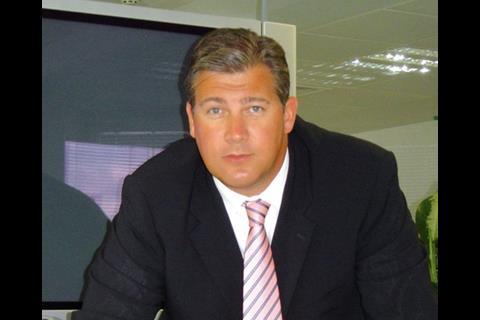Company focus Hurley Palmer Flatt’s energy service involves more than just its clients ...
The pressure on clients to improve their sustainability credentials has led to a battle between the industry’s top consultants to provide the most innovative green advice. The latest company to join the fray is Surrey-based Hurley Palmer Flatt (HPF), which is launching a service to link the energy strategies of neighbouring buildings owned by different clients.
First up is a scheme to unite its client Imperial College in South Kensington, London, with the Natural History Museum and the V&A. This may sound ambitious, but managing director Paul Flatt is aware that his company’s greatest success has been the rapid growth of its client base, and he has developed its sustainability strategy to ensure this growth continues.
“This is the first project of this sort we have done,” says Flatt. “I can’t say how long it will take exactly, but it will be years.”
Flatt joined the company back in 1990 when it was called JF Hurley & Partners, as an electrical design . Over the next 17 years he has seen it quadruple its numbers. “Back then I’d say we had about 50 clients. Now we have about 200,” he says.
The expansion is paying off financially; HPF predicts a turnover of £21m for 2007/08, a rise of 33% from the £16.5m it made the previous year. It is also predicting that profit will rise from £555,000 to £2.9m.
Flatt became managing director of HPF in 2000. Since then the group has secured top clients including Shell, KMPG and Barclays. “Our repeat business is 87% and we know clients recommend us,” says Flatt. “It’s important to have that sort of reputation.”
It’s a huge programme but the basic idea is to join clients up with other clients or just buildings nearby
Paul Flatt
To ensure the group retains that reputation it must give the clients what they want and, at the moment, sustainability is the buzzword. This is where the joint energy and carbon management programme being piloted at Imperial College comes in.
“It’s a huge programme but the idea is to join clients up with other clients or buildings nearby,” explains Flatt. “It makes life easier and saves time. Often, buildings close together will share utilities and distribution streams. By including all of them in the programme they can work together to implement the energy saving programme and we don’t have to check everything out with other parties who may be affected by the work, as they are already involved.”
Flatt says that, as far as he knows, HPF is the first company to offer this joined-up energy saving service. He is confident that the work the group is doing with Imperial College and the two large buildings close by it will inspire other clients to request the service.
Flatt’s vision for the future stretches further than the success of the carbon management scheme. His ambitious streak also runs to the company’s finances. “The future plan is to continue growing in all respects. Last year our turnover was just over £16m and this year it’s £21m. Next year it’ll be £26m and the year after that, £32m.”
But he adds that the focus on client services will remain top of his list of priorities so that the company is more than just another M&E firm.
“The plan, rather than becoming the second or third biggest M&E firm, is to become one of the largest multidisciplinary consultants. I think so far we’re on track.”
Postscript
If your firm would like advice on tax or accounting submit a question to



























No comments yet